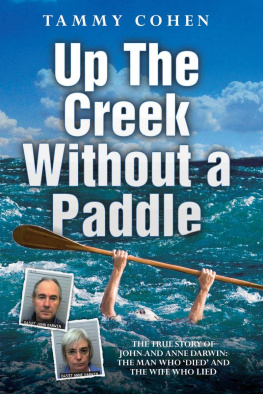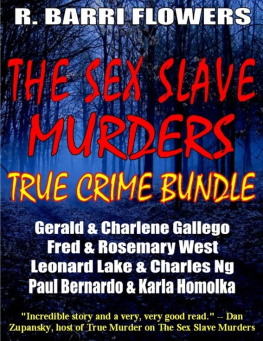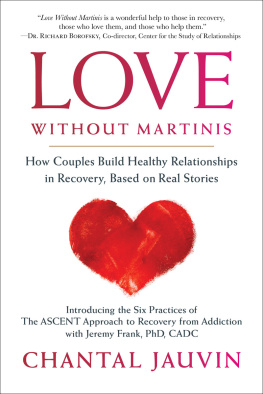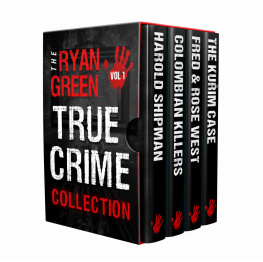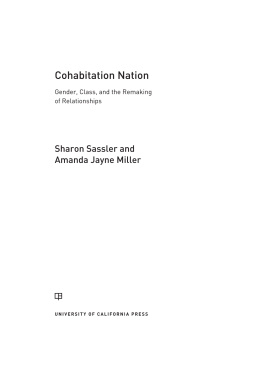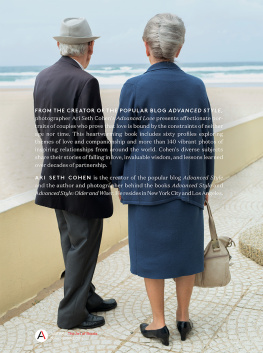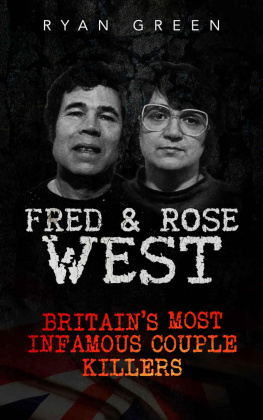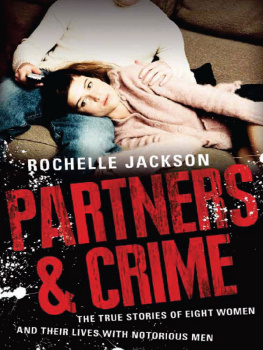B efore you read any further, be warned. The stories in this book will leave you appalled and traumatised; worse still, they will shake your faith in human nature. Certainly thats how it was for me as I researched each gruesome case with growing horror. When writing about lone killers, at least theres the consolation of telling oneself that this was one isolated, deluded individual. Writing about couples who kill removes even that crumb of comfort.
In 1997, in a letter to the then home secretary, Ian Brady referred to the child murders he committed with Myra Hindley as marriage ceremonies theoretically binding us ever closer. While the Moors Murders have been analysed so many times as to make their retelling in this book unnecessary, Bradys words offer a chilling insight into this most warped and most dangerous dynamic. The couple that kills together stays together bound by their secrets, their knowledge of one another, and by the blood rituals theyve shared.
Writing these stories wasnt easy, but it was grimly fascinating in terms of what it revealed about the secret underbelly of human relationships. I hope reading them provides the same experience. Just make sure you leave the light on!
A 14-year-old girl is kept for days as a sex slave, filmed begging for her life and then strangled. Two 8-year-olds are snatched off the street and left to starve in an underground dungeon. A mans head is staved in with a hammer before hes stabbed 66 times, his blood collected in a bowl to be drunk. A vulnerable man is held prisoner in a garden shed, then tortured to death Sadly, there is nothing unique about violent death. Since records began there have been no shortage of accounts bearing witness to mans tremendous capacity for inhumanity. But what makes the above crimes so shocking is that they are not the work of one depraved individual but a couple acting together. In a world where brutality has become so commonplace that we are almost immune to it, the juxtaposition of love and savagery, of romance and sadism, can still make us sit up and take notice.
We Westerners hold very little sacred, but one of our last, most fiercely protected ideals is that of the redemptive power of love. With the right person by our side, we insist, individuals who were once broken can be healed, lives that were going off track can be set straight again The love that inspires sonnets, poetry and even Whitney Houston ballads is what were all searching for because it represents the key to another kingdom, where past wrongs are put right and shattered hearts become whole. Love lifts us up where we belong, were told. And where we belong is this better place beyond loneliness, isolation and acts of desperation borne of bitterness and despair. Put simply, love at least the kind of love we choose to believe in is a power for good.
So pervasive is this view, so seductive the premise, that when something happens to cast doubt over it, we cannot, simply will not, believe it. Lovers should be heroes, not psychopaths; they should be kissing rather than killing. Their prize should be mutual salvation, not contamination.
The romantic comedies we flock to see, the love songs we sing along to, all share one clear message: love makes you a better person. Which is why crimes such as the ones described above send such shockwaves through us all. Here are couples lucky enough to find love, which is after all, our modern-day holy grail. But instead of redemption, they institute rape; instead of salvation, sadism; and instead of devotion, death.
Individually, they may have been broken from the start, but rather than fixing them, love shatters them still further into millions of irreparable pieces. This is not the noble, true love we know from a thousand big-screen love stories, but love that exalts in power, that feeds on misery, that wallows in violence. This is a love thats twisted and warped out of all recognition and yet it is still love.
The couples featured in this book are not inspired to be better people because they found each other. Instead theyre encouraged to be worse. Rather than boosting one anothers strengths, they exploit each others weaknesses. You would think you might be able to spot them, wouldnt you, these freaks of nature who turn romance into a blood sport? And thats another reason why they so disturb us: their very normality. They kidnap, they rape, they murder, torture and abuse And in between they make each other cups of tea, run baths, buy birthday gifts, have sex and tour their local DIY store together on rainy bank holidays. Love may have created a monster, but its a monster that wears a scarily ordinary face.
Pretty, petite blonde-haired Karla Homolka and her handsome young fianc cooked her parents a Fathers Day meal, while the dead body of the young girl theyd just assaulted lay festering among the bags of potatoes in their cellar. Rose West broke off from the most violent sexual abuse to make her husband and their victim a cup of tea. Kenny Kimes stopped off at a florists on his way home from disposing of the body of the man hed just murdered to buy the woman he loved a bunch of flowers
Its not the differences between these couples and any other couple in love that makes them so terrifying; its the similarities. You wouldnt spot them if you saw them walking towards you, hand in hand. If they moved in next door, you wouldnt know them. Its our ability to recognise love, but not evil.
Of course, not all killer couples are cut from the same cloth. Theres not one neat template defining them all. Some couples in this book would probably not have killed if they hadnt met. Something in the way they reacted with each other, in the timing of their coming together, created the soil in which the germ of violence was allowed to grow. Would Ann Hunter and Anton Lee, two well-respected professionals, have solicited for murder if they hadnt happened to have met each other and had those first drunken conversations, which spiralled out of control? Would the two couples who imprisoned and tortured vulnerable young men have graduated from bullying to murder if fate hadnt thrown them into each others paths?
In other cases, theres a high probability that one of the partnership, usually the woman, would probably have gone on to lead a largely uneventful life, if they had not been sucked into the malevolent orbit of a psychopathic partner. Michelle Martin, wife of Marc Dutroux, the Beast of Belgium, was remarkable only for her unremarkableness, for her lack of moral weight, her lack of substance Would she have gone on to commit the atrocities of which she was found guilty had she never crossed paths with her perverted husband? Rebecca Harris had a mean temper and a sharp tongue, but would she have stabbed anyone, if not for the influence of murderous lover Stephen Marsh? Would Kenneth Kimes now be facing a future behind bars if hed never come into the clutches of the materialist, domineering Sante?



